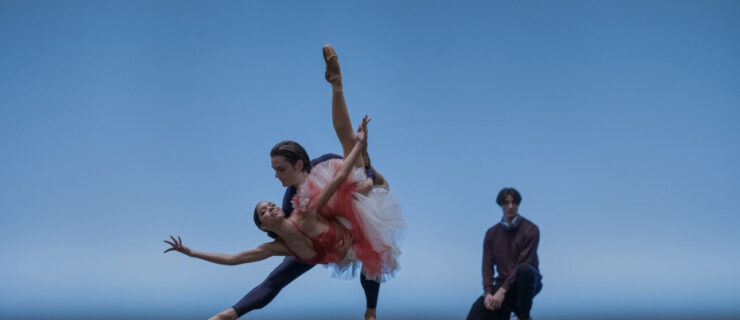How to Choreograph Your Own Competition Solo
Today, 20-year-old choreographer Emma Bradley spends her days touring with the dance convention NRG Dance Project, making work for students across the U.S. and Australia. But her first choreographic ventures were far more personal: During her junior and senior years of high school, Bradley started creating her own solos for dance competitions. “Making work on my body totally influenced the way I think about and process choreography,” she says. “And it set me on a different artistic path than I imagined.”
These days, more and more dancers are testing out self-choreographed solos at competitions. It can be risky—you could be going up against seasoned choreographers like Travis Wall—but the potential rewards make it worth taking the chance. “Choreographing your own solo is an invaluable learning experience,” says Andrew Winghart, a judge and choreographer for JUMP Dance Convention. “It forces you to look outside of yourself as a dancer, to really analyze your facility and how you can look your best.” Tempted to try your hand at self-choreography? Read on to find out more about taking creative control.
Emma Bradley performing her self-choreographed solo, “Hater,” at The PULSE on Tour (photo by Propix, courtesy Emma Bradley)
Choosing Music
Do pick a song you enjoy listening to
. “It’s so much easier to choreograph for yourself if you choose a song that already resonates with you,” says 18-year-old Regan Norton, who competed self-choreographed contemporary solos during her junior and senior years of high school. Finding a personal connection with your music is a great first step toward making something that’s truly you.
If you know what style you want your solo to be, start by listening to music that will complement it—and you. Take note of musical artists that catch your attention, and explore their greater bodies of work on iTunes or YouTube. Or, look to your own iPod for inspiration, like Bradley does. You never know what gems you’ll rediscover.
Don’t use a song that’s in the Top 40
. There’s a good chance that many other soloists have “connected” with it, too. “We tend to get a lot of the same songs,” says Brett Hahalyak, a judge at Nexstar, World-Class Talent Experience and International Dance Challenge. “I like to hear things that are kind of out of the box, rather than popular or current music.”
Setting Movement
Do create a solo that showcases you and your talents
. One way to learn how you move best is to improvise when you start your choreographic process. “I would record my improv and see what kind of choices I made repeatedly,” says Bradley. Incorporating those
favorite movement patterns into your choreography will help the final product feel more natural to your body.
Don’t rely on tricks alone
. It can be tempting to pack all of your most crowd-pleasing stunts into one solo. But with little more than two minutes onstage, you need to leave some time to tell your story. Throughout your creative process, think about what the piece means to you—and how you can communicate that message through movement. “I want to see a moment where you become more than just a dancer onstage,” Winghart says. “I want to see you take time to connect with the audience.” As much as you may love the wow factor of 16 turns in second, it’s probably not the best way to make that connection.
Do challenge yourself
. Setting goals for your solo throughout the year can keep it from getting stale after the first few performances. Both Bradley and Norton adjusted their solos after competitions, adding new, more difficult movements as they felt ready. “The great thing about doing your own solo is you can kind of edit as you go,” Winghart says.
Don’t present something unpolished
. While it’s important to push yourself, make sure you allow enough time to practice and clean each section before your performance. The stage is not the place to debut that new triple pirouette or switch leap. “You have to be super-solid in all elements before you get onstage,” Hahalyak says. If you can’t consistently perform a move in the studio, don’t bring it in front of the judges!
Getting Feedback
Do ask a teacher to stop by and help you with your process
. Sure, you have ultimate creative control, but it’s still a good idea to have another pair of eyes looking on. This can be especially helpful when the dreaded choreographer’s block sets in.
It can also keep you on schedule. For example, when Winghart was choreographing his own competition solos, he would give his teacher a specific time to watch the finished piece. “She would hold me to those deadlines,” he remembers.
Don’t let your teacher’s opinion overshadow your creative vision
. As the choreographer, you have the final say about what goes onstage. And while your teacher may have more experience making work, you know yourself better than anybody. Trust your gut!



